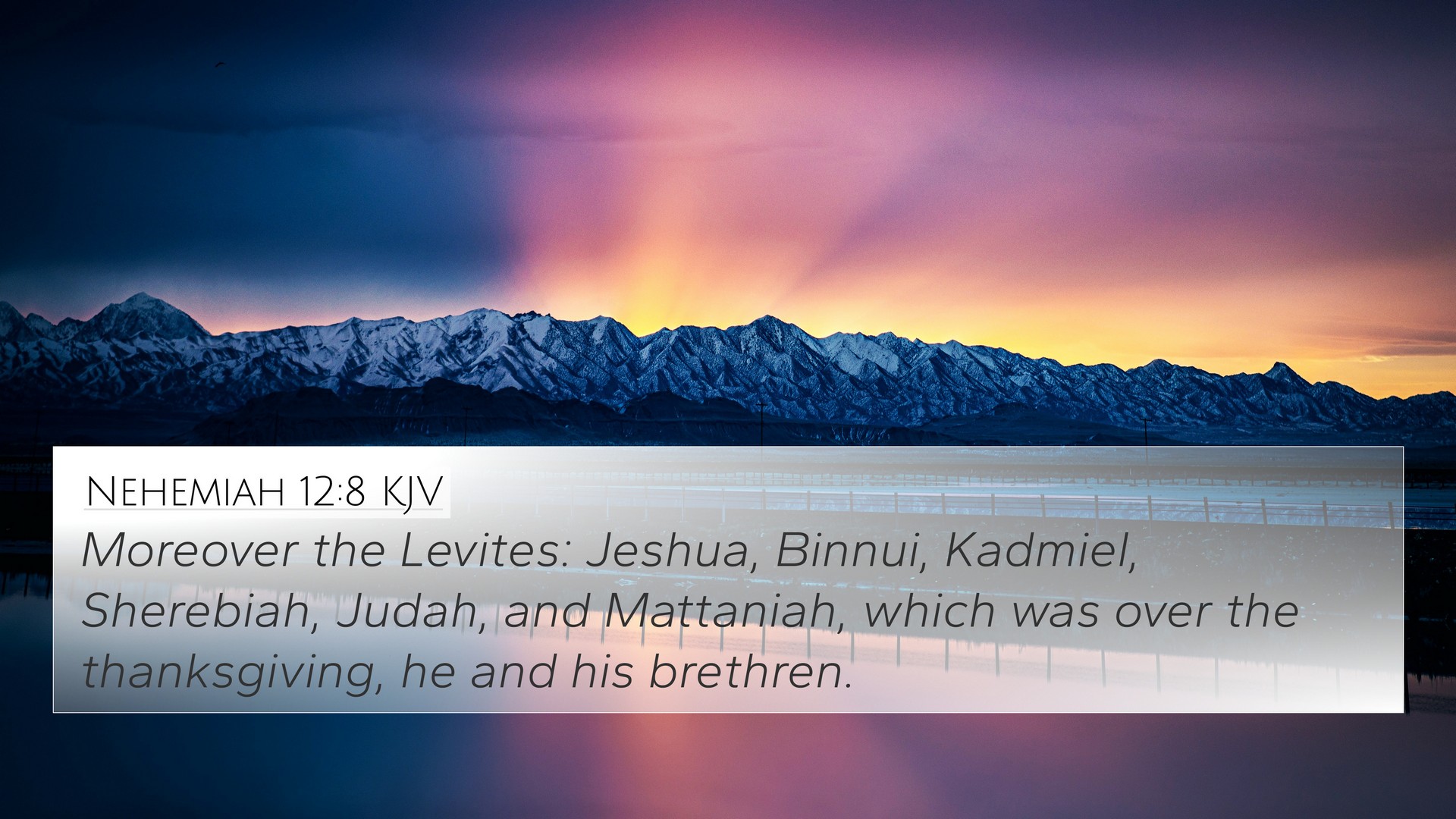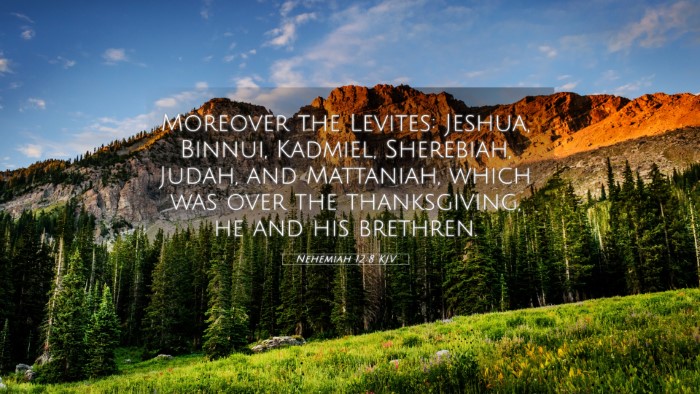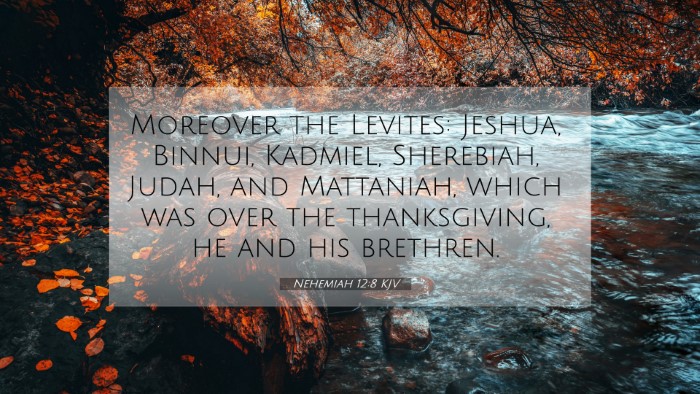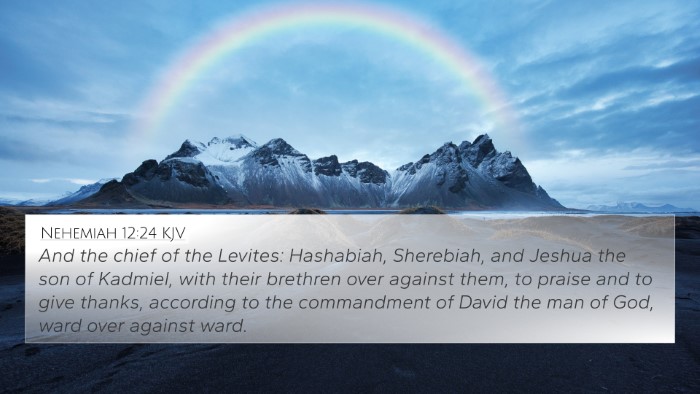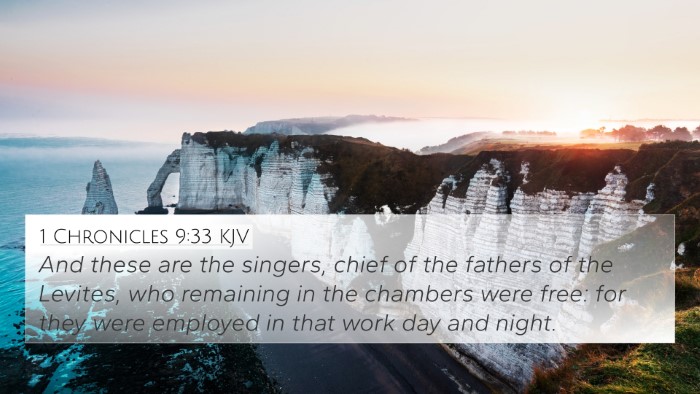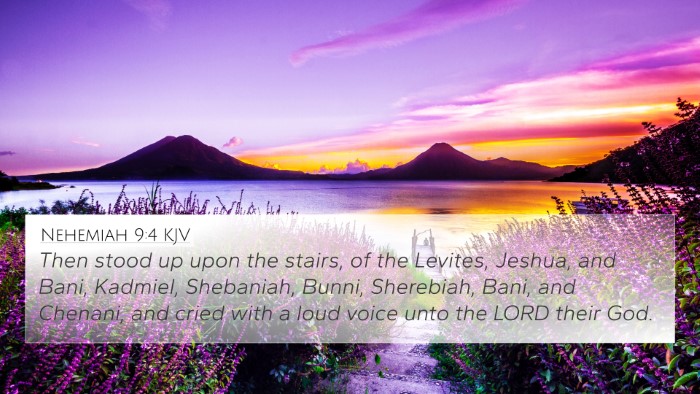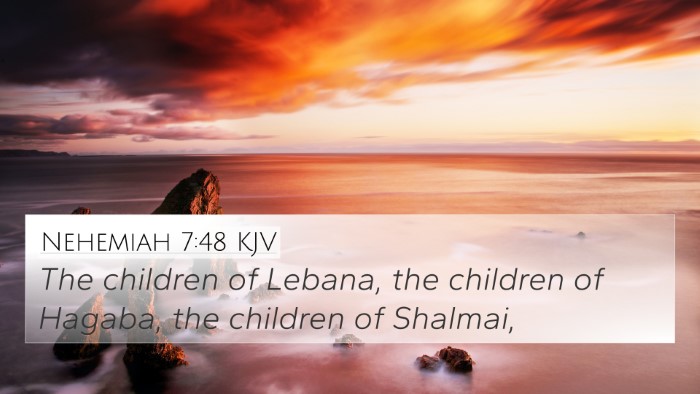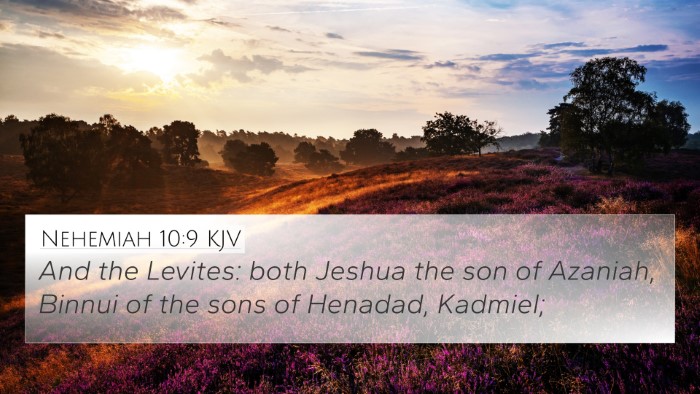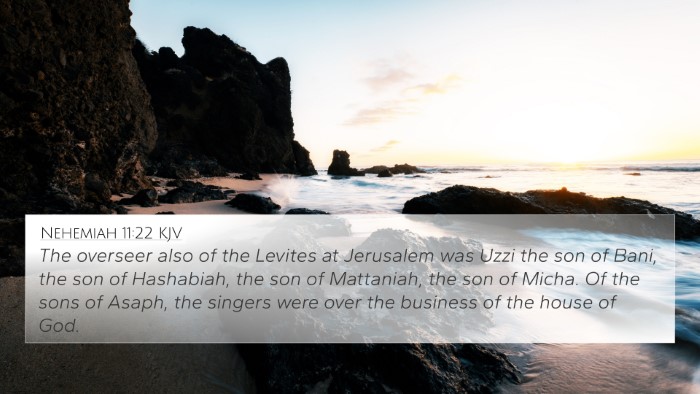Understanding Nehemiah 12:8
Verse: Nehemiah 12:8 (KJV) - "And the chief of the priests; Eliashib and his brethren, the priests, and the second order, was Ahitub, his brother."
Overview
This verse introduces a key moment in the history of the Israelites as they restore Jerusalem and re-establish their spiritual foundations. It highlights the leadership of chief priests during a significant time of renewal and the importance of priestly lineages.
Commentary Insights
The following insights draw upon established public domain commentaries, providing a deeper understanding of Nehemiah 12:8:
Matthew Henry's Commentary
Henry emphasizes the significance of the priestly family in the restoration of worship in Jerusalem. He notes that Eliashib's role as chief priest signifies the authority and responsibility for guiding the people in spiritual matters. The mention of Ahitub indicates continuity in the priesthood, which is crucial for maintaining the religious traditions of Israel.
Albert Barnes' Commentary
Barnes elaborates on the importance of the priestly order in this context, suggesting that the names listed in this verse are more than mere historical records; they underline the divine purpose in the restoration of Jerusalem. He explains that their roles are vital for the revival of the temple service and for leading the people in worship.
Adam Clarke's Commentary
Clarke points out that the specific mention of Eliashib and Ahitub reflects the structure of leadership following the exile. This hierarchy not only provided stability but also fulfilled prophecy about the restoration of the priesthood. Clarke notes that such genealogies in scripture serve to remind the faithful of God's unyielding plan through history.
Importance of Priestly Lineage
The priesthood, beginning with Aaron, carries immense significance in Israel's spiritual life. This verse serves as a reminder of the continuity of God’s covenant with His people, as the lineage is maintained even after exile.
Cross References
- Ezra 3:2: Highlights the role of Jeshua, the son of Jozadak, and Zerubbabel in leading the rebuilding efforts.
- Nehemiah 8:1: Discusses the assembly of the people and restoration of the Law under priestly guidance.
- 1 Chronicles 24:3: Describes the division of priestly duties and lineage.
- Hebrews 7:11-12: Discusses the transition of priesthood and its implications for believers.
- Jeremiah 33:18: Prophecy concerning the role of priests in the coming restoration.
- Matthew 1:12-16: The genealogy of Jesus, linking to the priestly line and fulfillment of promises.
- Luke 1:5: The priestly lineage of Zechariah, father of John the Baptist, highlighting continued priesthood in New Testament times.
Connection to Other Scriptures
The verse can be linked to other parts of Scripture that discuss themes of leadership and restoration. Understanding these connections can enhance biblical study and appreciation:
Similar Themes
- Leadership in Restoration: Haggai 1:1 emphasizes the call to rebuild, paralleling Nehemiah's efforts.
- The Role of Priests: Exodus 28:1 illustrates God's command to ordain priests, establishing a foundation for their ongoing role.
- God's Faithfulness: Isaiah 61:4 speaks of rebuilding ancient ruins, linking the restoration of Jerusalem to God’s promises.
Thematic Connections and Cross-Referencing
This verse serves as a bridge to understanding the continuity of biblical themes such as leadership, restoration, and God's enduring covenant. For anyone studying the Bible, recognizing these connections can deepen understanding and enhance personal faith.
Conclusion
Nehemiah 12:8, while a brief mention of key priestly figures, encapsulates the spirit of renewal and continuity integral to the history of Israel. By examining this verse alongside related texts, we can see the broader picture of God’s plan for His people.
